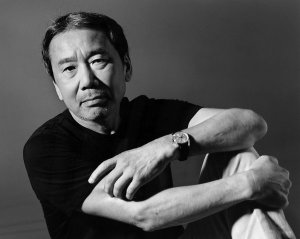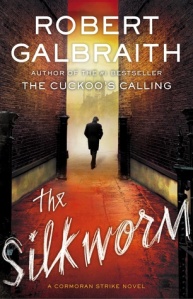I saw this book when I was researching English in the 1920s for my novel. The topic intrigued me and I thought it would be an interesting read and that I would still learn a thing or two while I listened to it. In retrospect, I should have known better. What I do know of Bill Bryson is that he’s an entertainer, not a scholar and while he’s good at researching and fact-finding, he’s not going to write a textbook when that’s more what I needed.
Made in America: An Informal History of the English Language in the United States by Bill Bryson
Summary from Goodreads:
In Made in America, Bryson de-mythologizes his native land, explaining how a dusty hamlet with neither woods nor holly became Hollywood, how the Wild West wasn’t won, why Americans say ‘lootenant’ and ‘Toosday’, how Americans were eating junk food long before the word itself was cooked up, as well as exposing the true origins of the G-string, the original $64,000 question, and Dr. Kellogg of cornflakes fame.
This book was a lot more of a history of American than a history of the language. The beginning focused a lot on language and pronunciation, which I enjoyed. He talked about differences that developed between the British and Americans, but I felt from there, he devolved into a critique on American business and history, taking only the occasional detour to talk about language and how the topic at hand impacted language. Bryson went on at length about the creator of baseball and who it really was and why it’s been popularized to be a different gentleman than he says it is, etc. However, he only talks on language impacts for a few paragraphs at the end of this section. I felt the book lost its focus and that was upsetting.
I enjoyed the beginning when Bryson talked about the pilgrims, early settlers, and founding fathers. I thought this section stayed on topic and I learned a lot about the differences in American English. However, as the book went on and moved to parts of culture that impacted the language, I felt there was more commentary on political and private industry actions than there was on the language changes that took place as a result. I liked using time as a progression in the book rather than subjects; it gave me a better overall look at how things were changing because the jump forward in backward in history with each subject didn’t give me an idea of what speech would have been like in a given period.
If you can’t tell from my comments already, I disliked the sports section of this book. Bryson admits that there are very few words or phrases that have entered our language from sports alone, yet he went on about it for a whole chapter. The list of words impacted by sports could have consisted of a single page and I felt the topics discussed would have been better suited in a sports history book.
The audiobook I listened to was narrated by William Roberts. I thought Roberts did a really good job with this narration. There were a lot of words from foreign languages that were mentioned when talking about the foreign impact on the English language. I only know Spanish and his accents on these words were good. I can’t speak for his Dutch, French, German, and Yiddish, but I believe he has enough resources as a narrator to find proper pronunciation for them all. This book was very dry and Roberts brought life to it.
Bryson is in a unique situation to write this book. He’s American by birth but spent a long time living in the UK and probably had to deal with his ‘Americanisms’ being criticized by Brits. I felt this book was a way to justify his speech and the ‘improper English’ that is spoken in the states. The French and Spanish are very precise about their language while English evolves constantly. Dictionaries add words all the time (selfie) and I’m sure there must be words taken out to make room for them (ain’t). Whether the British like it or not, Americans are going to twist the langue to make it fit our needs, just as we’ve done since the Pilgrims landed (not at Plymouth Rock according to Bryson).
Writer’s Takeaway: I thought the book lacked focus for stretches at a time. Bryson would go on a tangent loosely related to a topic that had a minor impact on language and I would grow board. I picked this book up because I’m genuinely interested in the topic, not (as I suspect many did) because Bryson wrote it. If I were a fan of his, I’m sure this wouldn’t have bothered me so much. But as someone with scholarly intentions, I felt it fell flat. The history before 1850 gave me some good information, but the modern-day didn’t do much for me.
Well written and narrated, but off topic for long stretches. 3 out of 5 stars.
Until next time, write on.
You can follow me on Goodreads, Facebook, Twitter, Pinterest, and Instagram. I’m available via email at SamAStevensWriter@gmail.com. And as always, feel free to leave a comment!
Related Posts:
Made in America: an informal history of the English history in the United States by Bill Bryson | Emilia Lives Life
1. Made in America – Bill Bryson | Margot McGovern
79. ‘Made In America,’ Bill Bryson | Doron’s Book Blog
Made in America by Bill Bryson | Reviews and More




















